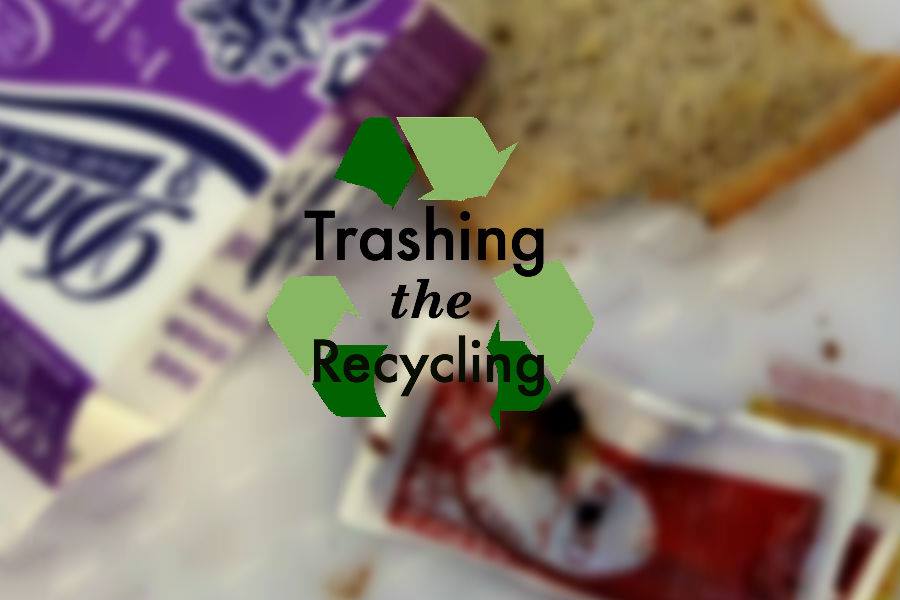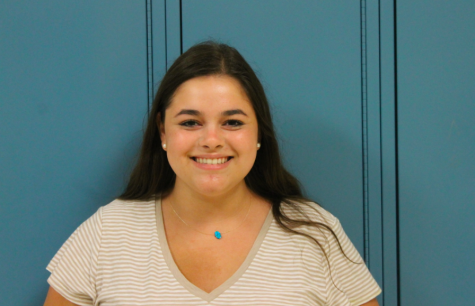According to the Department of Energy and Environmental Protection, Connecticut recycled only 26 percent of its waste in 2010.
But this isn’t just a statewide problem: Staples has its fair share of trouble with waste disposal, too.
With constant reminders to make eco-friendly choices and not to “trash the recycling,” students are encouraged to be aware and respectful of the environment. But because of how the student body recycles, Staples might be doing more harm than good.
It is not uncommon to see recycling bins overflowing with items that are meant for the trash. Many students, such as Emily Ressler ’14, have noticed that many students pay little attention to what they’re recycling, despite the cautionary labels and signs.
“Whenever I go to recycle a bottle of water, the bin is full of stuff that belongs in the trash,” Ressler said.
While tossing a chip bag into the recycling bin may be effortless or even accidental, it presents more of a problem than most students realize.
According to AP Environmental Studies teacher Michael Aitkenhead, the custodial staff is not allowed to recycle materials that have been contaminated.
In other words, once a student puts food or other non-recyclable waste into the recycling bin, the entire contents of that bin are disposed of as garbage rather than recyclables. This has potentially devastating environmental effects.
“Recycling reduces the amount of waste entering landfills and cuts down on the amount of raw materials that we pull out of the earth to provide the materials and products we use,” explained Aitkenhead in an e-mail interview. “So when we don’t recycle and just throw it in the trash, we add to the problem of resource depletion and waste accumulation.”
Such a serious problem, especially in a town that has even banned plastic retail bags to encourage environmental consciousness, raises questions. Mainly, if so many students are in favor of going green, why are they not doing their part?
Principal John Dodig speculates that maybe students recycle correctly at home, but from what he has observed, they don’t during the school day.
“I stand in the hallway between every class,” Dodig said. “Seven times a day I see students finish a water bottle and throw it in the garbage. They don’t even look for a recycling bin; they just throw it away.”
Sarah Fox ’14, co-president of Club Green, believes part of the problem might be that the signs can be confusing, so students ultimately choose to ignore them.
“Frequently the signage isn’t clear, and students mix the trash and recycling,” said Fox. “We definitely need to revamp the distinction in the classrooms.”
Not all students put garbage in the recycling bins, but those who do prevent the entire contents of the bins from being disposed of properly. Even if nine out of ten students pay careful attention to where they put their trash, just one person “contaminating” the recyclables renders the whole bin garbage.
Over the years, various efforts have tried to encourage students to recycle properly. Past initiatives have ranged from recycling competitions and prizes to collecting water bottles to raise money, but none of them have been successful.
“It has ultimately been lack of student interest or compliance that has led to these initiatives failing,” said Aitkenhead, who believes that without student support, none of these plans will work.
While initiatives have been unsuccessful in the past due to student apathy, many students say they care about the recycling problem and want to help.
Julia Greene ’15, who is running an environmental initiative for Staples Players, believes that it is up to students, not custodians, to solve the problem.
“I feel optimistic because the problem could be solved rather easily but disappointed that it exists in the first place,” said Greene. “The best way to fix this situation works in two parts. We need to make sure we recycle correctly so we don’t add more work to the custodians’ jobs, and the custodians need to do their part and recycle it. But they can’t do their job until we do ours.”
And according to many students, this job isn’t very difficult.
“We should be responsible enough to pay attention when we throw things out,” said Ressler.
Principal Dodig believes that if Staples students show that recycling is an issue they care about, change will visible immediately.
“We have 1900 kids. If this became an issue for them, we would have 100% of our recyclables recycled,” said Dodig. “If it was important to StaplesHigh School students, it would be done already.”
















































